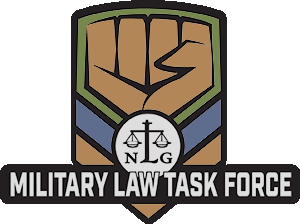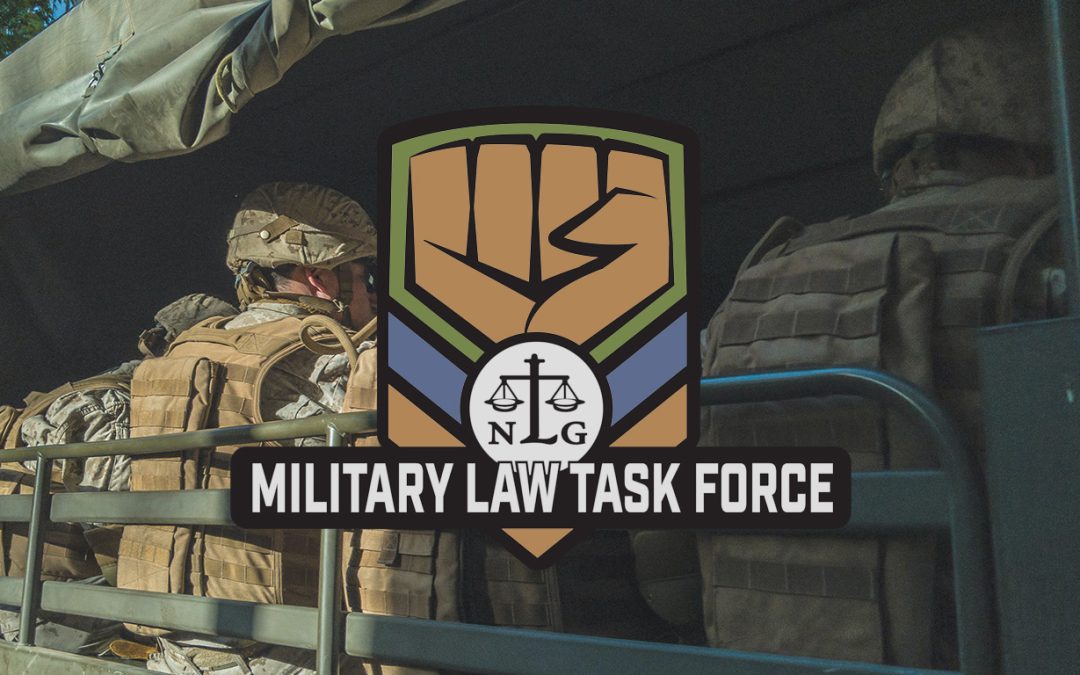by Deborah H. Karpatkin
Published in the Winter 2016 issue of On Watch.
According to a recent decision by the Tenth Circuit in Ortiz v. U.S. ex rel. Evans Army Community Hosp.,[1] the child of a servicemember mother injured in utero can’t bring her own claim for injury under the FTCA because of the Feres doctrine. The Ortiz case is now before the Supreme Court on a petition for certiorari. This article gives a brief overview of the case and the issues before the Court – it is not intended to be a comprehensive discussion of the Feres doctrine and cases.
What is the Feres doctrine?
First, some legal background. The Feres doctrine is not legislation – it is a creation of the Supreme Court. In Feres v. United States[2], the Supreme Court adopted an exception to the FTCA’s broad waiver of sovereign immunity, and barred active duty military personnel from bringing claims against the government for their own injuries arising out of activity incident to service. This included derivative claims: Feres was brought by the widow of a serviceman, for wrongful death caused by negligence incident to his service.
Since 1950, the Feres doctrine has grown and evolved in various directions, as different courts have adopted conflicting rulings. And, there are various rationales – sometimes called “special factors” – to explain the doctrine: “(1) the distinctly federal nature of the relationship between the government and members of the armed forces; (2) the availability of alternative compensation systems [e.g., Veterans Benefits]; and (3) the fear of damaging the military disciplinary structure.”[3] But not all courts follow these rationales, and some are no longer controlling. [4] With regard to the “military discipline” factor, especially for medical malpractice in the prenatal/labor/delivery context, the Sixth Circuit recognized that this “clearly cannot be said to invite judicial interference in ‘sensitive military affairs’”.[5]
Many courts agree that the Feres doctrine forces unfair results. But, as Supreme Court doctrine, courts follow it, albeit with great reluctance. In dismissing cases under the Feres doctrine, courts note that it has been “criticized by countless courts and commentators across the judicial spectrum;”[6] criticize “the inequitable extension of this doctrine to a range of situations that seem far removed from the doctrine’s original purposes;”[7] and describe “the injustice of the result but … nevertheless … have no legal authority, as an intermediate appellate court, to decide the case differently.”[8]
Feres is at its most unfair when it applies to the claims of third parties – like the Ortiz baby, here. For that, we have what is called the “genesis doctrine” to thank. To what extent does the third party claim have its genesis in a claim that the service member could have brought? While the Feres doctrine started with third-party claims, the genesis doctrine became Supreme Court law in Stencel Aero Engineering Corp. v. United States. In that case, a third-party indemnity action was unavailable “for essentially the same reasons that the direct action by [the serviceman] is barred by Feres.”[9]
Some background on the Ortiz case.[10]
Captain Heather Ortiz was an active duty officer in the Air Force, and was admitted to Evans Army Community Hospital in Colorado to deliver Baby I.O. by C-Section. Her records showed she was allergic to Zantac, but she was given it anyway, and then given Benedryl to prevent an allergic reaction, which caused her blood pressure to drop. The fetal heart monitor showed distress, but there was no timely response by hospital personnel. Baby I.O. suffered a lack of oxygen, and was born with a severe permanent brain injury.
Captain Ortiz’ husband George Ortiz, as parent of I.O., brought a lawsuit against the United States seeking compensation under the FTCA. The United States moved to dismiss for lack of subject matter jurisdiction, claiming the Feres doctrine barred I.O.’s claims.
The Feres doctrine applies here, the Tenth Circuit ruled, because the injuries to the civilian baby were sustained “incident to [her mother’s military] service.”
The Tenth Circuit concluded that under the genesis test, Baby I.O.’s claims had their genesis in her military mother, because her mother also sustained injury. Applying this injury-focused approach, the Tenth Circuit barred Baby I.O.’s claim: “The plain fact is that Captain Ortiz’s service-related injury [the wrongfully administered medication] led to an injury to her civilian daughter.”[11]
But not all courts apply the genesis test to in utero claims. The Fourth Circuit rejected application of the genesis test to in utero injuries because the newborn’s “injury did not derive from any injury suffered by a service member, but was caused when the government breached an affirmative duty of care owed directly to him.”[12] The Eighth Circuit and Eleventh Circuit similarly allowed in utero injuries to proceed, despite Feres.[13]
The certiorari petition: questions before the Supreme Court.
The Petition offers the Court two questions:
Given the split in the circuits, should Feres should be expanded to bar a child’s birth-injury claim, when government negligence injures the child of an active-duty mother?
Does treating birth-injury claims of the children of active-duty mothers differently than the children of active-duty military fathers constitute unconstitutional gender discrimination?
At least one amicus brief (the California Women’s Law Center and Veterans Legal Institute) has directly raised a third question: should Feres v. United States should be overturned?
The gender discrimination issue.
While challenges to Feres have been around for a while, the gender discrimination aspect of the Ortiz case is new, and was not addressed by the Tenth Circuit.
As argued in the petition for certiorari: “The mere fact that a father’s military service confers family access to a military hospital has never been enough to invoke Feres to bar a child’s birth injury claim. But because I.O. was injured minutes before delivery with an active-duty mother, she was denied any remedy for her severe injuries.” The petition continues: “Thus, I.O.’s eligibility to bring a claim turns on the gender of her active-duty parent, even if the medical treatment that resulted in the injury was negligent in precisely the same manner.”[14]
The petition cites to Frontiero v. Richardson, where the Supreme Court invalidated a law allowing male members of the Air Force to claim their wives as dependents, and thus get housing and medical benefits, but denying the same benefits to the husbands of female active duty members without proof that their husbands were financially dependent.[15] Justice Ruth Bader Ginsberg, then Director of the ACLU Women’s Rights Project, submitted an amicus brief on behalf of the service member. The petition also cites to Reed v. Reed, another Ginsburg case from her ACLU days.[16]
Some amici focus on the gender discrimination issue, arguing that the Feres doctrine, as applied here, is “a system that …. single[s] out the civilian children of servicewomen for adverse treatment [and] discriminates against women who serve in the armed forces,” [17] and “disadvantages women who choose to serve.”[18]
Will the Supreme Court grant certiorari? When will we know?
Legal interest in the case has been substantial, with many amicus briefs filed to date, in support of petitioner; more can be anticipated when the government’s brief is filed. [19]
And, heightened by the Ortiz certiorari petition, the Feres doctrine has received renewed attention from scholars and practitioners.[20] There’s even a Facebook page: “Repeal the Feres Doctrine.”[21]
Are there four votes to grant certiorari? Petitioner may feel confident of at least two, maybe three*. Justice Scalia issued a “vociferous critique” of the Feres doctrine in United States v. Johnson, stating that Feres “was wrongly decided and heartily deserves the widespread, almost universal criticism it has received.”[22] More recently, Justice Thomas dissented from the denial of certiorari in a Feres doctrine case, writing that “at a bare minimum, it should be reconsidered.”[23] The discrimination claims, invoking Frontiero and Reed, may get Justice Ginsburg’s vote.
As for timing: the government’s response to the petition was due on January 19, 2016. Any reply is due within 10 days. Additional amicus briefs may be filed. When all briefs are submitted, the case will go into the Court’s certiorari review process, where, at some point, the Court will issue an order either granting or denying the petition. If the petition is granted, then a schedule will be set for submission of briefs and oral arguments on the merits of the case; substantial amicus participation can be anticipated.
Look for an update in a forthcoming issue of On Watch.
Deborah Karpatkin is a civil rights and employment rights lawyer in New York City and a member of the MLTF. She has represented military conscientious objectors since 1991 and also represents service members seeking discharge upgrades, and employees in civilian workplaces. She is also as a member of the NYC Bar Association’s Military Law and Sex and Law Committees.
* This article was written prior to Justice Scalia’s death on February 13.
[1] 786 F. 3d 817 (10th Cir. 2015).
[2] 340 U.S. 135 (1950).
[3] Ortiz, 786 F. 3d at 821.
[4] See, e.g., United States v. Shearer, 473 U.S. 52, 58 n. 4 (1985); Brooks v. United States, 337 U.S. 49, 53 (1949); Taber v. Maine, 67 F. 3d 1029, 1038 (2d Cir. 1995).
[5] Brown v. United States, 462 F. 3d 609, 615 (6th Cir. 2006).
[6] Ritchie v. United States, 733 F. 3d 871, 874 (9th Cir. 2013).
[7] Costo v. United States, 248 F. 3d 863, 869 (9th Cir. 2001).
[8] Hinkie v. United States, 715 F. 2d 96, 97 (3d Cir. 1983).
[9] 431 U.S. 666, 673 (1977).
[10] Facts are based the Ortiz decision and the Petition for Certiorari, https://assets.documentcloud.org/documents/2461131/ortiz-cert-petition-101315.pdf.
[11] Ortiz, 786 F. 3d at 832.
[12] Romero v. United States, 954 F. 2d 223, 226 (4th Cir. 1992).
[13] Mossow v. United States, 987 F. 2d 1365 (8th Cir. 1993); Del Rio v. United States, 833 F. 2d 282 (11th Cir. 1987).
[14] Petition for Certiorari at 25.
[15] 411 U.S. 677 (1973).
[16] 404 U.S. 71, 76-77 (1971).
[17] Amicus brief of Professors Alex Stein and Dov Fox at 9-10, http://blogs.harvard.edu/billofhealth/files/2015/11/OrtizAmicusSteinFox.pdf.
[18] Amicus brief of California Women’s Law Center and Veterans Legal Institute at 21, http://cwlc.org/web/wp-content/uploads/2015/11/Ortiz-Amicus.pdf.
[19] Supreme Court Docket Report, http://www.supremecourt.gov/search.aspx?filename=/docketfiles/15-488.htm, (last visited 1/11/16).
[20] See, e.g., http://www.sfnr.com/sfnr-writes/articles/unfair-claims-standard-injured-babies-born-military-moms-should-go (last visited 1/11/16).
[21] https://www.facebook.com/Repeal-The-Feres-DoctrineLaw-148270125245857/ (last visited 1/11/16); http://www.huffingtonpost.com/dov-fox/reproductive-malpractice-and-the-us-military_b_7706980.html (last visited 1/11/16). Of course, much writing and scholarship preceded the Ortiz case. See, e.g., Mia Donnelly, Note,
Fighting Feres: Creating a VA Benefits Program for the Children of Servicemembers Injured by Parental Exposure, 83 Geo. Wash. L. Rev. 67 (2015), http://www.gwlr.org/wp-content/uploads/2015/05/83-Geo-Wash-L-Rev-647.pdf.
[22] Ortiz, 786 F. 3d at 822; United States v. Johnson, 481 U.S. 681, 700 (Scalia, J. dissenting)
[23] Lanus v. United States, 133 S. Ct. 2731, 2732, 186 L. Ed. 2d 934 (2013) (Thomas, J. dissenting from the denial of certiorari)



